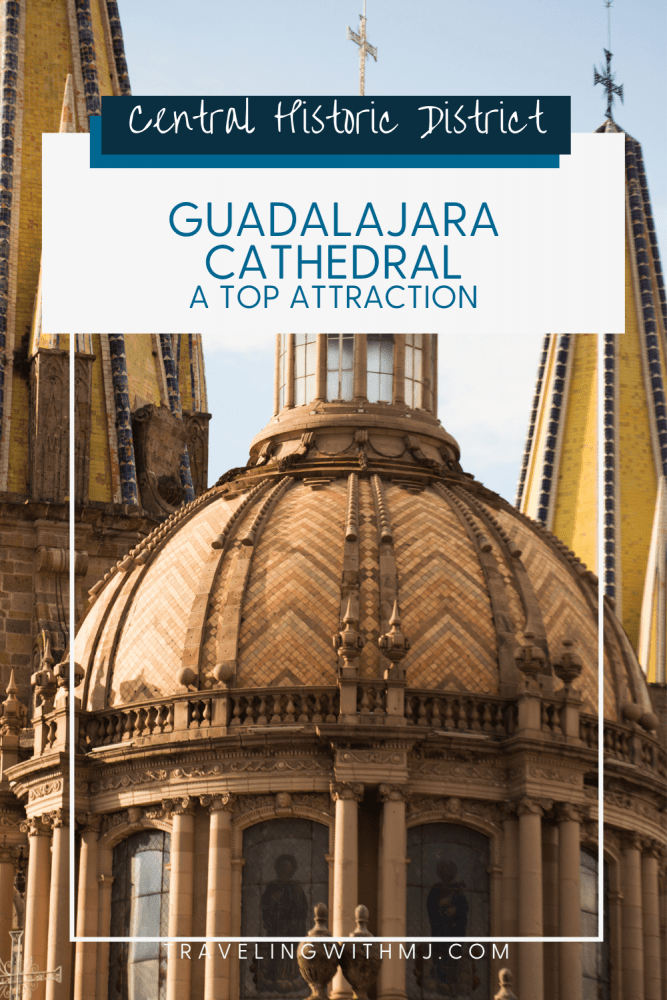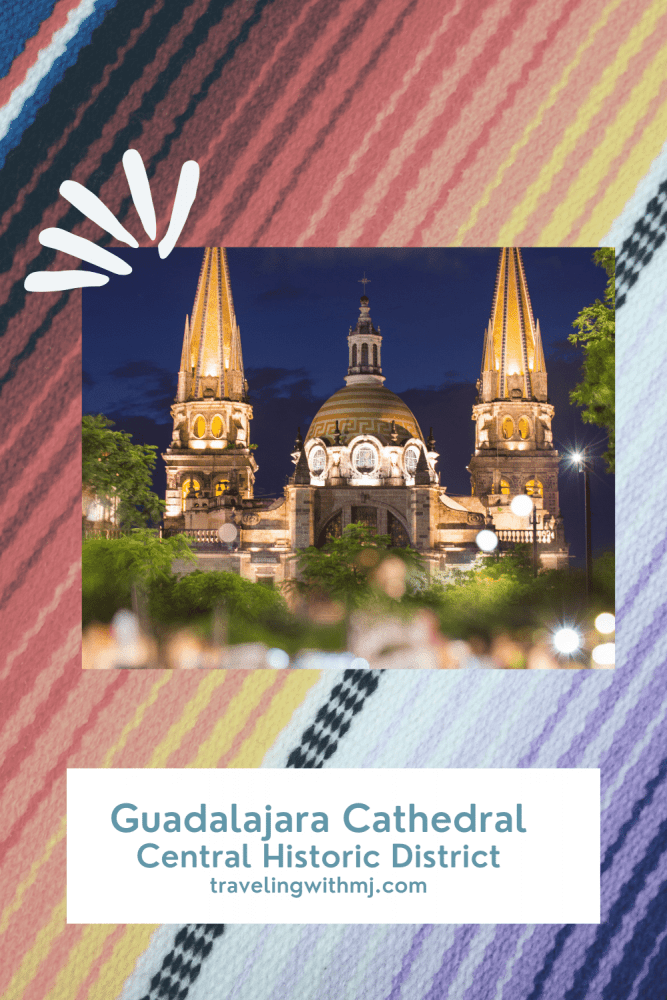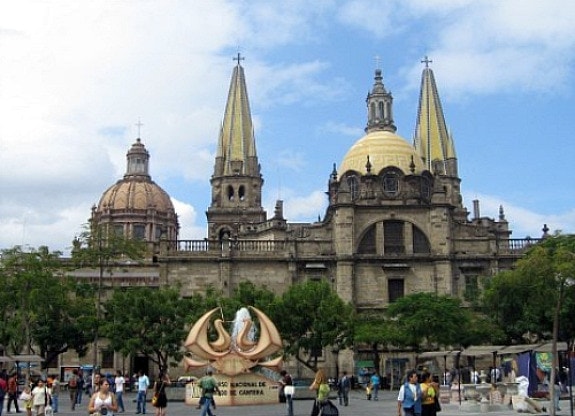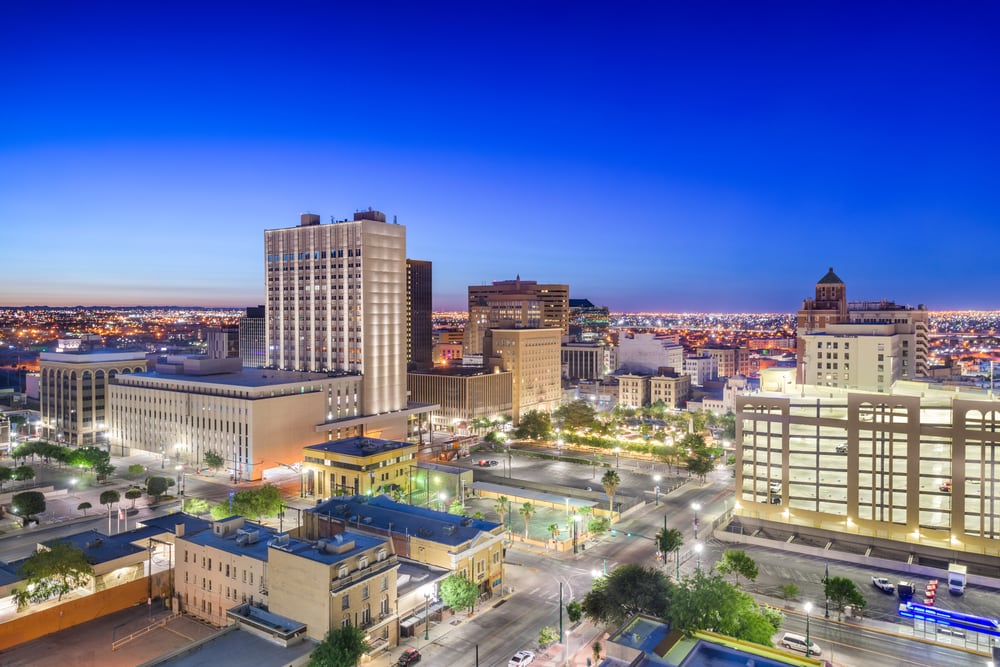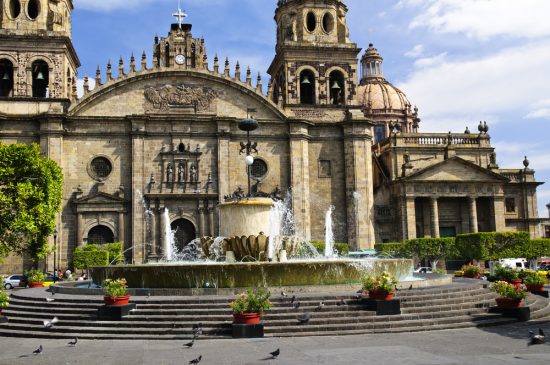
As Mexico’s second-largest city, there are many reasons to visit Guadalajara: it has high-quality museums, some of the best street food in Mexico and is the birthplace of mariachi, the quintessential Mexican musical genre. It is a wonderful combination of cosmopolitan city and historic center, blending the old with the new, the modern with the traditional, and the hip with the historical.
It also has a massive jewel in its crown – the Guadalajara Cathedral, a minor basilica that is part of the Roman Catholic Archdiocese of Guadalajara. Visiting the Guadalajara Cathedral is one of the top things to do in Guadalajara, whether you’re exploring the city on your own or joining an organized walking tour of Guadalajara.
Located in the downtown Centro Historico (Avenue 16 de Septiembre, Hidalgo y Morelos), Guadalajara Cathedral is known for being one of the most stunning buildings in the city. There has been a church on the site since 1541 and it has gone through many transformations in the more than 450 years it has been standing; because of this, the cathedral is a mix of architectural styles.
Originally a modest church of adobe and a thatched roof, the current church building was commissioned in 1561 after the original was destroyed by fire, and finished in 1618 in the Spanish Renaissance style. In 1818 an earthquake shook the city, causing the towers and the dome of the cathedral to collapse; they were subsequently replaced, only to be destroyed in another earthquake in 1849.
The current towers we see today were completed in 1854 and took three years to finish. They were designed by the architect Manuel Gomez Ibarra in the Neo-Gothic style, contrasting greatly with the original construction and giving us the unique building we see today. It is said that the design of the towers was inspired by the then Bishop’s dinner china; they are decorated with yellow tiles from Sayula, a town which is located 60 miles south of Guadalajara.
Despite remaining standing throughout everything it has been through, the cathedral is still in danger from earthquakes; it has suffered slight damage in six earthquakes in the 20th and 21st centuries. Current problems include a slight tilt in the north tower and structural damage to the dome. However, this does not detract at all from its beauty.
Walking into the cathedral is like taking a big step back in time. The main altar is made of marble and silver, but you will also find ten additional altars around the side of the cathedral. Decorated by some of Mexico’s finest artists, the altars are each dedicated to a different saint, including Our Lady of Zapopan (the patron saint of Guadalajara), Saint Christopher, Our Lady of the Assumption, and Saint Dominic.
Behind the main altar are sufficient chairs to seat the council of Cardinals should they ever all show up for Mass at the same time. The cathedral has beautiful stained glass windows which were imported from France and are reminiscent of the stained glass in Notre Dame de Paris, many religious artifacts, religious pieces of art, murals, and relics of Saint Inocencia, among others.
The remains of Saint Inocencia, a child saint, can be found in a glass case near the entrance. Legend has it that, after being forbidden to attend Catholic church services by her father, the child Inocencia was offered classes in the religion by a local nun and eventually took her Holy Communion; upon telling her father, he was so incensed that he plunged a knife into her chest, an act which is now considered to be one of the first acts of religious persecution against Catholics. Saint Inocencia’s body was exhumed and acquired by a rich priest in the 1780s and he brought her to Guadalajara Cathedral, where she now rests. It is believed that if single women come and recite their prayers before the saint, they will soon meet and marry the love of their lives.
One of the main attractions in the cathedral is the crypt of the archbishops. Located under the main altar and the choir are the remains of a number of bishops and cardinals going back to the 16th century. Most notable is Juan Jesus Posadas Ocampo, who was assassinated at Guadalajara International Airport in 1993.
There are a few impressive murals in the cathedral, but probably the most significant is The Immaculate Conception by Bartolome Esteban Murillo, which is located in the sacristy. Other murals to see are: The Last Supper by Jose Maria Uriarte, painted between 1817 and 1821, The Dispute of the Sacrament by Felipe Castro, The Virgin of the Apocalypse by Jose de Paez, and The Militant Church mural in the chapter house by Cristobal de Villalpando.
Guadalajara Cathedral is also home to the largest organ in the country. This impressive 19th-century French organ is housed in a loft above the main entrance.
When visiting Guadalajara Cathedral, it is worth remembering that it is an active place of worship, therefore, you must dress respectfully and modestly, making sure to cover your shoulders and knees. The cathedral is usually open between 8 am and 8 pm. Masses and other services take place often, it’s best to check with the cathedral when they are scheduled. There is no charge to enter the cathedral, although you may want to consider leaving a donation.
Outside the cathedral are four plazas known collectively as Plaza of the Crosses. The name comes from their cross-like shape, with the cathedral taking pride of place in the center.
Lying directly in front of the cathedral is Plaza Guadalajara, which has an ornate circular fountain shaped like an oyster with rose petals to represent the two nicknames of the city, Pearl of the West and City of Roses. The fountain sits upon the city’s coat of arms, a pair of lions resting their paws on a tree trunk.
To the south of the cathedral is Plaza de Armas, which gives the best views of the cathedral, and the Government Palace, whose most important feature is its intricate wrought-iron bandstand used as a performance space for marching bands. It was made in France and then purchased and gifted to the city by former Mexican president Porfirio Diaz in the 1880s.
North of the cathedral is Plaza de la Rotonda, home to the monument Rotunda of the Illustrious People of Jalisco, which honors notable people from the state of Jalisco from numerous different fields, including law, politics, the arts, and science. It is also a lovely, green space.
Plaza de la Liberacion lies to the east of the cathedral and is the site of huge free concerts. It also features a massive sculpture of the man who signed the Mexican Declaration of Independence, Miguel Hidalgo.
After a visit to the cathedral, these spacious plazas are perfect for strolling, getting a bite to eat, people watching, and enjoying the many artisans that set up shop there. Don’t hurry though! Slow your pace down and enjoy the culture, history, and atmosphere of Guadalajara.
When you’re in a hurry, though, you can’t wrong with the carne en jugo at Karne Garibaldi, one of my favorite restaurants in Guadalajara.
Find a terrific hotel in Guadalajara with the map and booking tool below.
Save to your favorite Pinterest Boards!
